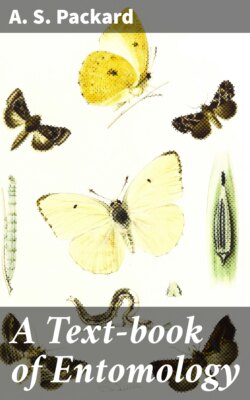Читать книгу A Text-book of Entomology - A. S. Packard - Страница 6
На сайте Литреса книга снята с продажи.
POSITION OF INSECTS IN THE ANIMAL KINGDOM
ОглавлениеTable of Contents
Although the insects form but a single class of the animal kingdom, they are yet so numerous in orders, families, genera, and species, their habits and transformations are so full of instruction to the biologist, and they affect human interests in such a variety of ways, that they have always attracted more attention from students than any other class of animals, the number of entomologists greatly surpassing that of ornithologists, ichthyologists, or the special students of any other class, while the literature has assumed immense proportions.
Insects form about four-fifths of the animal kingdom. There are about 250,000 species already named and contained in our museums, while the number of living and fossil species in all is estimated to amount to between one and two millions.
In their structure insects are perhaps more complicated than any other animals. This is partly due to the serial arrangement of the segments and the consequent segmental repetition of organs, especially of the external appendages, and of the muscles, the tracheæ, and the nerves. The brain is nearly or quite as complicated as that of the higher vertebrates, while the sense-organs, especially those of touch, sight, and smell are, as a rule, far more numerous and only less complex than those of vertebrates. Moreover, in their psychical development, certain insects are equal, or even superior, to any other animals, except birds and mammals.
The animal kingdom is primarily divided into two grand divisions, the one-celled (Protozoa) and many-celled animals (Metazoa). In the latter group the cells and tissues forming the body are arranged in three fundamental cell-layers; viz. the ectoderm or outer layer, the mesoderm, and endoderm. The series of branches, or phyla, comprised under the term Metazoa are the Porifera, Cœlenterata, Vermes, Echinodermata, Mollusca, Arthropoda, and Vertebrata. Their approximate relationships may be provisionally expressed by the following
